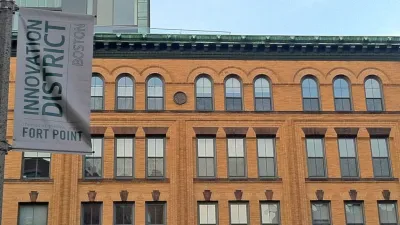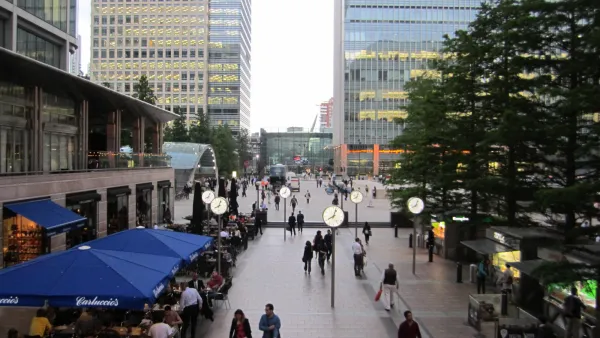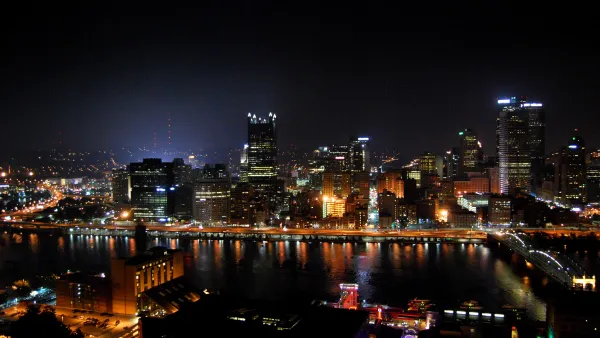Last year, the "innovation district" rose to prominence as a way to describe urban knowledge economy epicenters. This report from Bruce Katz and Brookings describes how the phenomenon continues to evolve.

Unlike the suburban office parks associated with tech firms, today's innovation district is central and urbane, boasting an equal spread of MacBook entrepreneurs and baristas. According to this article, there's not a lot to complain about. "The growing application of 'open innovation'—where companies work with other firms, inventors, and researchers to generate new ideas and bring them to market—has revalued proximity, density, and other attributes of cities."
The phenomenon has been quick to spread. "A simple Google search will reveal the extent to which the language of 'innovation districts' (or 'innovation quarters,' 'innovation neighborhoods,' or 'innovation corridors') has rapidly permeated the field of urban and metropolitan economic development and place-making.
Several observations from the article about how innovation districts are evolving:
- In some cases, the label "innovation district" has been misapplied by regions seeking to drive up demand and attract high-value enterprises.
- Innovation districts aren't necessarily yoked to existing knowledge centers, i.e. university campuses. This is a good thing.
- Some ostensible innovation centers need to become friendlier to networking. "When designed and programmed well, a district's public spaces facilitate open innovation by offering numerous opportunities to meet, network, and brainstorm [...] districts anchored by medical campuses have significant work ahead."
- Intermediaries (cultivators, incubators, accelerators) are becoming crucial enablers for collaboration between firms.
- Innovation districts must "ensure that nearby neighborhoods and their residents connect to and benefit from new growth opportunities in innovation districts and beyond. Scaling such efforts will be critical in the years to come, as the success of these districts will be defined in large part by their broader city and regional impacts."
FULL STORY: One year after: Observations on the rise of innovation districts

Analysis: Cybertruck Fatality Rate Far Exceeds That of Ford Pinto
The Tesla Cybertruck was recalled seven times last year.

National Parks Layoffs Will Cause Communities to Lose Billions
Thousands of essential park workers were laid off this week, just before the busy spring break season.

Retro-silient?: America’s First “Eco-burb,” The Woodlands Turns 50
A master-planned community north of Houston offers lessons on green infrastructure and resilient design, but falls short of its founder’s lofty affordability and walkability goals.

Test News Post 1
This is a summary

Analysis: Cybertruck Fatality Rate Far Exceeds That of Ford Pinto
The Tesla Cybertruck was recalled seven times last year.

Test News Headline 46
Test for the image on the front page.
Urban Design for Planners 1: Software Tools
This six-course series explores essential urban design concepts using open source software and equips planners with the tools they need to participate fully in the urban design process.
Planning for Universal Design
Learn the tools for implementing Universal Design in planning regulations.
EMC Planning Group, Inc.
Planetizen
Planetizen
Mpact (formerly Rail~Volution)
Great Falls Development Authority, Inc.
HUDs Office of Policy Development and Research
NYU Wagner Graduate School of Public Service



























